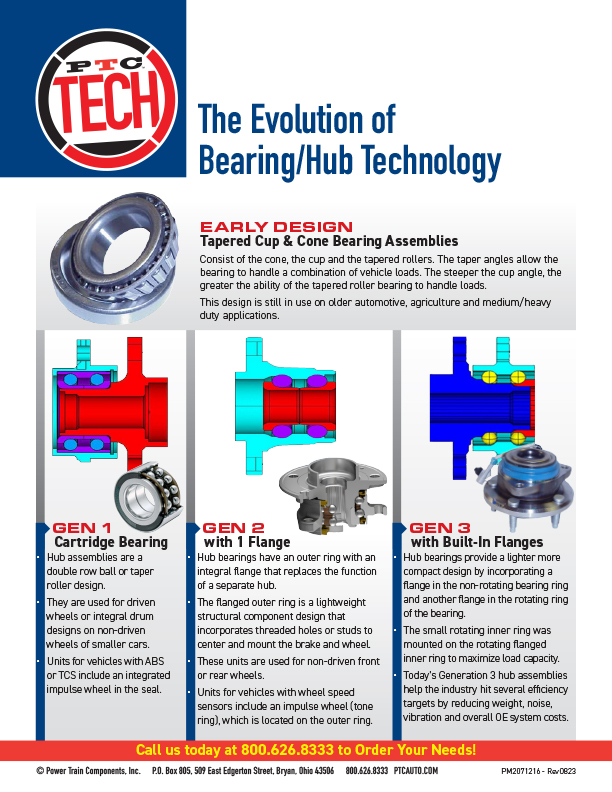The Evolution of Bearing/Hub Technology
Understanding the Evolution of Wheel Bearing & Hub Technology
Wheel bearing and hub designs have evolved dramatically—from serviceable tapered bearings to compact, sealed hub assemblies. PTC supports every generation with OE fit and coverage for early models through the latest GEN 3 platforms. Here’s a quick breakdown of how the technology has changed—and what it means for today’s service bays.
Early Design: Tapered Cup & Cone Bearing Assemblies
Still found on older vehicles and medium/heavy-duty trucks, this system uses tapered rollers between a cone and cup. The steeper the taper, the more load the bearing can support. These were common in traditional serviceable axle hubs and agricultural equipment.
GEN 1: Cartridge Bearings
- Double row ball or taper roller design
- Used for driven wheels or drum-based non-driven wheels
- ABS-equipped units feature impulse wheels built into the seal
GEN 2: Bearings with One Flange
- Outer ring includes an integral flange that replaces a separate hub
- Flange contains threaded holes or studs to mount brake and wheel components
- Primarily used for non-driven front or rear wheel positions
- ABS-equipped versions feature an impulse (tone) ring on the outer ring
GEN 3: Built-In Flanges for Inner and Outer Rings
- Incorporates flanges into both the rotating and non-rotating bearing rings
- Compact, lightweight design reduces OE system costs
- Improves load handling, lowers NVH (noise, vibration, harshness), and supports modular installation

